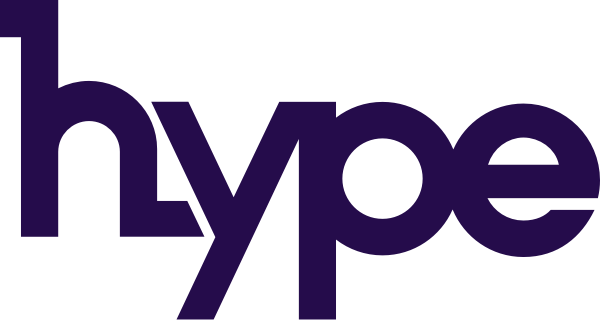What Is SEO Forecasting?
SEO forecasting is the process of predicting the future performance of a website or web page in terms of its visibility and ranking on search engine results pages (SERPs). This is typically done by analyzing historical data and trends, as well as taking into account any upcoming changes to search algorithms and the competitive landscape. The goal of SEO forecasting is to help website owners and marketers make informed decisions about their SEO strategy, such as which keywords to target, how to optimize their content, and how to allocate their resources. By predicting how their website is likely to perform in the future, they can take steps to improve their visibility and drive more organic traffic to their site.
Why Is SEO Forecasting Important?
SEO forecasting is important because it can help website owners and marketers make more informed decisions about their SEO strategy. By predicting the future performance of their website, they can identify potential areas for improvement and take steps to maximize their visibility and organic traffic. This can help them stay ahead of the competition and ensure that their website ranks highly on SERPs for relevant keywords. Additionally, SEO forecasting can help organizations allocate their resources more effectively, by identifying which areas are likely to yield the best returns on investment. This can help them maximize the impact of their SEO efforts and drive more value from their digital marketing campaigns.
Current Methods of SEO Forecasting
There are a few different methods that are commonly used for SEO forecasting. These include:
- Analyzing historical data and trends:
This involves looking at a website’s past performance in terms of its visibility and ranking on SERPs, as well as any factors that may have influenced this performance (such as changes to search algorithms or the competitive landscape). By identifying patterns and trends in this data, it is possible to make educated guesses about how a website is likely to perform in the future.
- Using SEO tools and software:
There are a variety of tools and software available that can help with SEO forecasting. These tools often use algorithms and data from multiple sources (such as search engines, social media, and other online platforms) to predict how a website is likely to perform in the future. Some of these tools also allow users to input their own data and assumptions, which can help improve the accuracy of their predictions.
- Conducting keyword research:
Keyword research is an important part of SEO, and it can also be used for forecasting. By analyzing the search volume and competition for specific keywords, it is possible to predict which keywords are likely to be most effective for a website. This can help organizations prioritize their SEO efforts and focus on the keywords that are most likely to drive organic traffic to their site.
- Monitoring the competitive landscape:
Another key factor in SEO forecasting is the competitive landscape. By monitoring the performance of competitors and analyzing their SEO strategies, it is possible to predict how a website is likely to perform relative to its competitors. This can help organizations identify opportunities to differentiate themselves and improve their visibility on SERPs.
What Are The SEO Forecasting Models
SEO forecasting models are tools or techniques that are used to predict the future performance of a website in search engine results. These models can take into account a variety of factors, such as historical data, keyword trends, and competition, to make predictions about how well a website will rank for specific keywords over time. The goal of using an SEO forecasting model is to help businesses and website owners make informed decisions about their search engine optimization strategy.
Top 4 SEO Forecasting Tools
Google Data Studio ( Looker Studio)
Google Data Studio (Looker Studio) is a visualization and reporting tool that can be used to create custom dashboards and reports using data from various sources, including Google Search Console. To use Google Data Studio for SEO forecasting, you would need to connect Google Search Console data to Google Data Studio and then create a dashboard or report that displays the data in a way that is useful for forecasting.
Here are the steps to do this:
- Connect Google Search Console data to Google Data Studio: In Google Data Studio, go to the “Data Sources” tab and click the “Add data source” button. Select Google Search Console as the data source and follow the prompts to connect it to your Google Data Studio account.
- Create a dashboard or report: Once the data is connected, you can create a dashboard or report that displays the data in a way that is useful for forecasting. This may involve creating charts, graphs, and tables that show data on search queries, clicks, impressions, and other metrics that are relevant to SEO forecasting.
- Analyze the data: Once the dashboard or report is created, you can analyze the data to identify trends and patterns that can be used to forecast SEO performance. This may involve applying statistical techniques, such as regression analysis, to the data to create models that can be used to predict future SEO performance.
Prophet by Facebook
Prophet is a time series forecasting tool developed by Facebook that can be used to make predictions about future events based on historical data. To use Prophet for SEO forecasting, you would need to first collect data on relevant SEO metrics, such as search queries, clicks, and impressions. This data would need to be in a format that is compatible with Prophet, such as a CSV file.
Once you have the data, you can use Prophet to create a time series model that can be used to forecast SEO performance. Here are the steps to do this:
- Install Prophet: To use Prophet, you will need to install it on your computer. Prophet is available through the Python package manager, pip, so you can install it by running the following command in your terminal: pip install Prophet
- Import the data: Once Prophet is installed, you can import the data that you collected into a Python script. This may involve using the pandas library to read the data from a CSV file and then creating a dataframe that contains the data.
- Create the time series model: Next, you can use Prophet to create a time series model that can be used to forecast SEO performance. This involves calling the Prophet() function and passing the dataframe containing the data as an argument. This will create a model that can be used to make predictions about future SEO performance.
- Make predictions: Once the model is created, you can use it to make predictions about future SEO performance. This involves calling the predict() method on the model and passing in the dates for which you want to make predictions. The model will then return the predicted values for the specified dates.
Using Prophet for SEO forecasting involves collecting data on relevant SEO metrics, importing the data into a Python script, creating a time series model with Prophet, and then using the model to make predictions about future SEO performance.
Ahrefs’ Traffic Site Forecast
Ahrefs’ Traffic Site Forecast is a tool that can be used to forecast the traffic of a website based on its historical performance. To use this tool for SEO forecasting, you would need to have an account with Ahrefs and have access to the Traffic Site Forecast tool.
Once you have access to the tool, you can use it to forecast the traffic of a website by following these steps:
- Go to the Traffic Site Forecast tool: Log in to your Ahrefs account and go to the Traffic Site Forecast tool. This can typically be found under the “Tools” menu.
- Enter the URL of the website: In the Traffic Site Forecast tool, enter the URL of the website for which you want to forecast traffic. This will load the data for the website and display it in the tool.
- Select the time period: Next, select the time period for which you want to forecast traffic. This may be a specific date range, such as the next month or quarter, or it may be a relative time period, such as the next 30 or 90 days.
- View the forecast: Once the time period is selected, the Traffic Site Forecast tool will display a forecast of the traffic for the website during the selected time period. This forecast will be based on the website’s historical performance and will provide an estimate of the traffic that the website is likely to receive during the selected time period.
SEO Keyword Forecasting by SEOmonitor
SEO Keyword Forecasting by SEOmonitor is a tool that can be used to forecast the performance of keywords on search engines. To use this tool for SEO forecasting, you would need to have an account with SEOmonitor and have access to the SEO Keyword Forecasting tool.
Once you have access to the tool, you can use it to forecast the performance of keywords by following these steps:
- Go to the SEO Keyword Forecasting tool: Log in to your SEOmonitor account and go to the SEO Keyword Forecasting tool. This can typically be found under the “Tools” menu.
- Enter the keywords: In the SEO Keyword Forecasting tool, enter the keywords for which you want to forecast performance. This may be a list of keywords that you are currently targeting, or it may be a list of new keywords that you are considering targeting.
- Select the time period: Next, select the time period for which you want to forecast performance. This may be a specific date range, such as the next month or quarter, or it may be a relative time period, such as the next 30 or 90 days.
- View the forecast: Once the time period is selected, the SEO Keyword Forecasting tool will display a forecast of the performance of the keywords during the selected time period. This forecast will be based on the keywords’ historical performance and will provide an estimate of the traffic, clicks, and other metrics that the keywords are likely to generate during the selected time period.
SEO Keyword Forecasting by SEOmonitor for SEO forecasting involves using the tool to forecast the performance of keywords on search engines. This can provide an estimate of the traffic, clicks, and other metrics that the keywords are likely to generate in the future, which can be useful for forecasting SEO performance.
In conclusion, SEO forecasting is an important aspect of any digital marketing strategy. By analyzing data and trends, and considering expert insights and industry knowledge, you can make informed decisions about your SEO strategy and anticipate changes in the industry. Whether you are a small business owner or a marketing professional, SEO forecasting can help you understand the potential impact of future changes on your website’s performance and make strategic decisions to stay ahead of the competition. By using tools and techniques like keyword research, website analysis, and industry trend analysis, you can create a forecast that helps you understand the direction of the industry and make informed decisions about your SEO strategy going forward.



